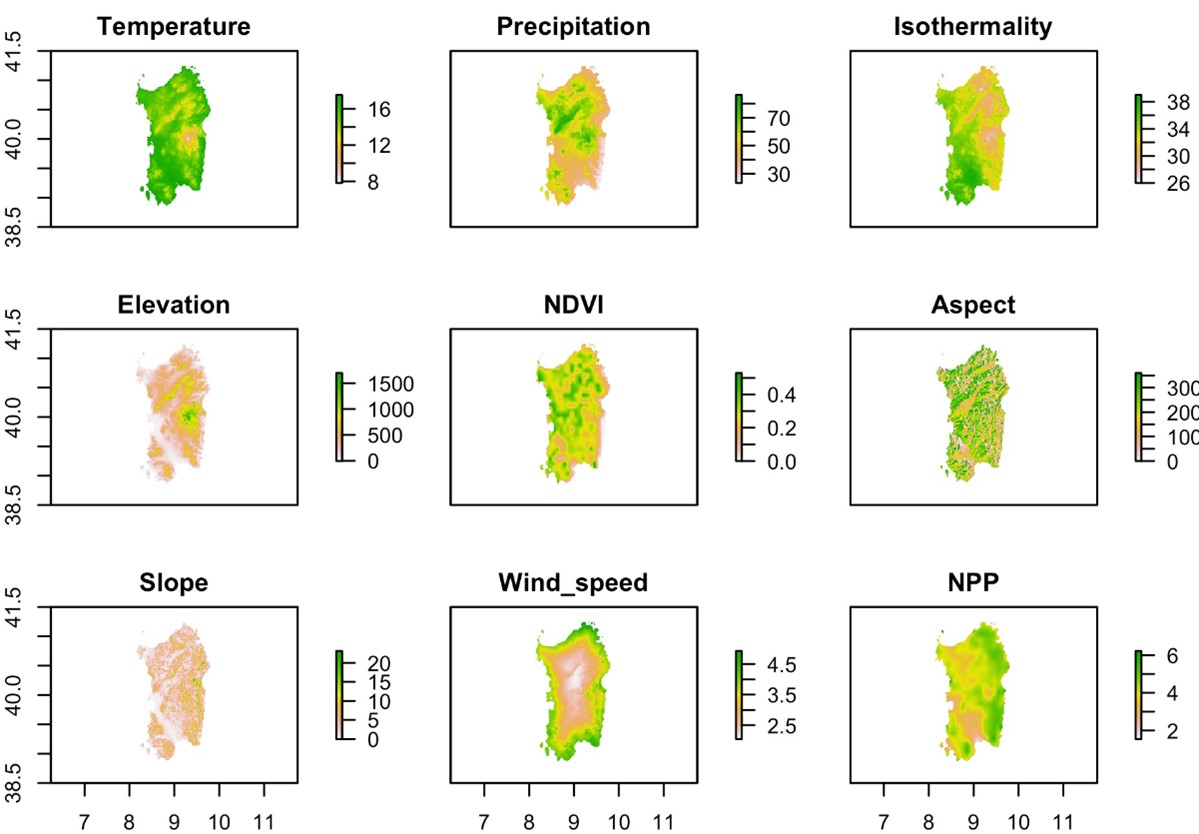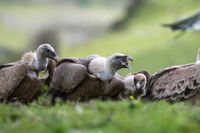LINKED PAPER
Modelling the effect of environmental variables on the reproductive success of Griffon Vulture (Gyps fulvus) in Sardinia, Italy. Aresu, M., Pennino, M.G., De Rosa, D., Rotta, A. & Berlinguer, F. 2021 IBIS. doi: 10.1111/ibi.13012 VIEW
A wide range of factors can influence breeding success in raptors in both the short and long term. These factors are frequently complex and often specific to species, populations, and habitats. The Griffon Vulture (Gyps fulvus), a cliff nesting raptor, is constrained by nest site availability that limits its breeding densities and ultimately its persistence within a territory. Despite European populations experiencing significant increases, in Italy, the species is still included on the Red List as ‘Near Threatened’, with the last natural population persisting on the island of Sardinia. Its conservation status on the island has improved over the past five years thanks to the implementation of the project ‘LIFE Under Griffon Wings’ (LIFE14 NAT/IT/000482) which tackled the main threats to the species. A new LIFE project (‘LIFE Safe for Vultures’ – LIFE19 NAT/IT/000732) has just started with the aim of enlarging the area of occupancy of the species, now limited to north-western Sardinia. A new nucleus will be created due to the reintroduction of the species in other areas of the island with individuals coming from the mainland population.
But which areas are best to release translocated individuals ensuring the establishment of a new colony?

Figure 1 Griffon Vultures in Sardinian landscape © Mauro Sanna.
To answer this question, we applied a Bayesian hierarchical model to identify which environmental variables mostly affect the breeding success of the Griffon Vulture in the northern part of Sardinia. We considered variables including human disturbance, the type of nest, mean annual temperature and precipitation, isothermality, elevation, vegetation coverage, wind speed, and the aspect and slope of the land surface. We used a unique dataset of reproductive records (197 nests monitored over 39 years for a total of 992 breeding records). Breeding success of the Griffon Vulture was defined as a binary variable that assume a value of 1, when a nest’s fate was successful (nests that fledged at least one juvenile) or 0 if it failed (nests that did not fledge a juvenile). Breeding success was used as an indicator of the habitat suitability at nesting sites to reveal which habitat features influence reproductive success in this species.
All variables were aggregated at 0.008 x 0.008 degrees (corresponding to ~ 800 meters) spatial resolution and we tested for correlations, collinearity, outliers and missing data before their use in the models (Zuur et al. 2009). Variables with a variance inflation factor >5 and a correlation higher than 0.80 were not included together in the models. The Bayesian hierarchical model was applied to identify which environmental variables mostly affect the breeding success of Griffon Vultures in northern Sardinia. In addition to the environmental and topographic variables included in the models, the following factors “type of nests” and “level of human disturbance” as well as spatial-temporal effects were included to account for the rest of the variation within the data. Particularly, the response variable Yi represents the species’ breeding success (1 being yes; 0 being no) at each sighting location i. Model selection was performed using a forward-stepwise approach where the null model (containing only the intercept) was used as a base model and covariates were subsequently added.
According to our best model, the probability of successfully raising a vulture chick was higher for nests exposed to high wind speeds, not covered by natural shelters, surrounded by vegetation mostly represented by shrubland and pastures, with low human disturbance and in years with low rainfall. Besides environmental variables, other factors can influence breeding productivity in raptors, such as the age and experience of the pair, population density, or other biotic factors that are spatially structured but were not included in our model, for example, prey availability and competition, etc.
 Figure 2 Spatial map of the eight predictors used to define the reproductive breeding successes of the Griffon Vulture (Gyps fulvus) in the north-western part of Sardinia, Italy.
Figure 2 Spatial map of the eight predictors used to define the reproductive breeding successes of the Griffon Vulture (Gyps fulvus) in the north-western part of Sardinia, Italy.
The model developed in the present study has helped species management by allowing spatially explicit decisions about conservation planning (Mateo-Tomás & Olea 2010). When considering the climatic variables and vegetation type, we expect higher probability of breeding success in Griffon Vultures in south-eastern Sardinia. Thus, this is where we plan to release translocated individuals as part of the conservation project ‘LIFE Safe for Vultures’ (LIFE19 NAT/IT/000732).
Image credit
Top right: Griffon Vultures at a feeding site in Sardinia © Mauro Sanna.
References
Aresu, M., Rotta, A., Fozzi, A., Campus, A., Muzzeddu, M., Secci, D., Fozzi, I., De Rosa, D. & Berlinguer, F. 2020. Assessing the effects of different management scenarios on the conservation of small island vulture populations. Bird Conservation International 31: 111-128. VIEW
Zuur, A.F., Leno, E.N., Walker, N., Saveliev, A.A. & Smith, G.M. 2009. Zero-truncated and zero-inflated models for count data. In Mixed effects models and extensions in ecology with R. Statistics for Biology and Health. 261-293. New York: Springer.
Mateo-Tomás, P. & Olea, P.P. 2010. Anticipating knowledge to inform species management: predicting spatially explicit habitat suitability of a colonial vulture spreading its range. PLoS One 5: e12374. VIEW






